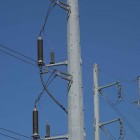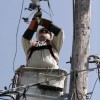Background
February 2, 2011 was a dark day for many Texans. Extreme cold led to a spike in electricity use, and coal and natural gas plants and electric utility companies didn’t have the resources to maintain service. As a result, the state operated rolling blackouts—short-term, intentional power outages that moved in pockets across the state. Some homes and businesses lost power from 20 minutes to over eight hours. The blackouts left business and homeowners frustrated with power companies and state energy management. Austin residents criticized Austin Energy for poor planning and insufficient warning to customers.
The power that was available on the day of the blackouts was expensive, as power companies turned to old plants with poor efficiency to generate more power. Despite continued freezing weather and warnings of another blackout, the Electric Reliability Council of Texas (ERCOT) was able to keep the power on. Officials said the blackouts were necessary to prevent statewide power outages that would have lasted longer and cost more money. The Texas State Senate examined complaints about poor communication from the state’s grid operator, noting that the first media alert about the outages went out an hour after the blackouts began in some parts of the state. Other critics accused ERCOT and power plants of manipulating the market, raising price caps the day before the outages occurred.



